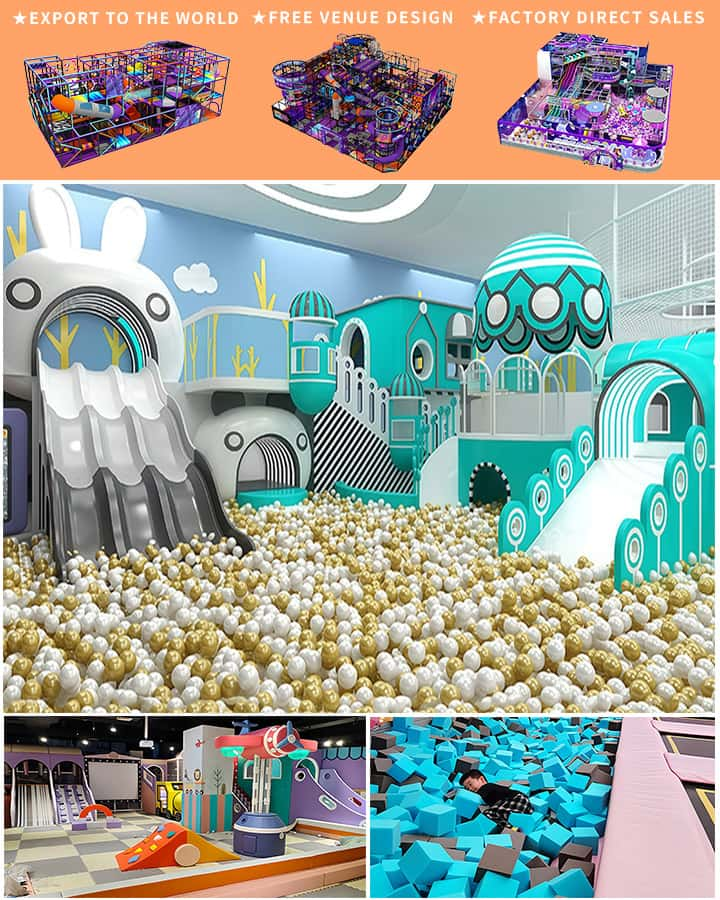In the bustling world of family entertainment and recreational design, creating an engaging indoor playground for children is a task that requires creativity, precision, and thoughtful planning. One of the most effective tools in achieving this goal is the use of Computer-Aided Design (CAD) blocks. These digital building blocks allow designers to efficiently construct detailed blueprints and bring imaginative play spaces to life. Here’s how utilizing CAD blocks can revolutionize the design process for children’s indoor playgrounds.
The Importance of Indoor Playgrounds for Children
Indoor playgrounds serve as havens where children can safely engage in physical activities, fostering their physical development and social skills. These environments are especially crucial during adverse weather conditions or in urban settings where outdoor space may be limited. By providing a controlled yet stimulating environment, indoor playgrounds help children expend energy, enhance motor skills, and encourage imaginative play.
The Role of CAD Blocks in Design
Computer-Aided Design (CAD) software has transformed the architectural and engineering industries by enabling precise and efficient design processes. When it comes to designing an indoor playground, CAD blocks offer a versatile and systematic way to create complex structures. These pre-drawn components can represent various elements such as slides, climbing walls, ball pits, tunnels, and interactive installations. By dragging and dropping these blocks onto a virtual canvas, designers can quickly assemble and visualize different configurations without the need for manual drafting.
Steps to Design an Indoor Playground Using CAD Blocks

Conceptualization and Planning: Begin with a clear vision of the playground’s theme and objectives. Whether it’s a whimsical fantasy land or a space-themed adventure, having a strong concept will guide the selection and arrangement of CAD blocks. Sketch out rough ideas and identify key features that align with your vision.
Selecting Appropriate CAD Blocks: Choose from a library of pre-designed CAD blocks that match the desired elements of your playground. Most CAD software offers extensive libraries categorized by type and function. Ensure that the blocks you select meet safety standards and age appropriateness for the intended users.
Layout Design: Arrange the selected CAD blocks on the virtual floor plan. Pay attention to the flow of movement within the space, ensuring there is ample room for children to move freely between different play areas. Consider incorporating zones for different activities – for instance, a quiet reading nook adjacent to a high-energy ball pool.
Detailed Refinements: Once the basic layout is established, refine each section with finer details. This might include adding textures, colors, and materials to the CAD blocks to simulate the final appearance more accurately. Incorporate safety features such as soft flooring, rounded edges, and proper supervision areas.
Simulation and Testing: Utilize the simulation capabilities of CAD software to virtually walk through the playground. This step helps in identifying potential design flaws or hazards that could pose risks to young visitors. Make necessary adjustments based on this feedback to ensure a safe and enjoyable experience.
Finalization and Production: After thorough testing and refinement, finalize the design and prepare construction drawings. These detailed plans will be used by builders to construct the physical playground, bringing your CAD-generated vision to reality.
Benefits of Using CAD Blocks
- Efficiency: CAD blocks save time by eliminating the need for manual drafting, allowing for rapid prototyping and iteration.
- Accuracy: Precision in measurements ensures that all elements fit together perfectly, reducing the likelihood of errors during construction.
- Visualization: High-quality renderings enable stakeholders to visualize the end result, facilitating better decision-making and approval processes.
- Safety: Incorporating safety standards directly into the design phase helps create a secure environment for children.
Conclusion
The integration of CAD blocks in designing children’s indoor playgrounds represents a significant leap forward in recreational space planning. This method not only streamlines the design process but also enhances creativity and safety. From initial concept to the final build, CAD blocks empower designers to craft dynamic and engaging environments that cater to the diverse needs and imaginations of children, ensuring hours of fun and development in a controlled and safe setting.




